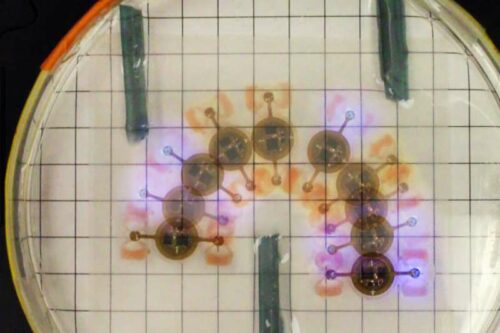Researchers have designed a micro robot with living muscle cells to make them suitable for biological environments.

Robotics has evolved from a simple path following bot to a microbot that can be injected in the human body for diagnostic and even surgical purposes. But yet there is more to come as the present robotics technology is not considered for day to day applications. Though this can some be changed there are more advancements to be considered and developed.
Researchers at the University of Illinois Urbana-Champaign, Northwestern University and collaborating institutions have developed a hybrid “eBiobots” that combine soft materials, living muscle and microelectronics. These small biological robots are powered by mouse muscle tissue grown on a soft 3D-printed polymer skeleton.

To give the biobots the freedom of movement required for practical applications, the researchers set out to eliminate bulky batteries and tethering wires. The eBiobots use a receiver coil to harvest power and provide a regulated output voltage to power the micro-LEDs. Researchers can send a wireless signal to the eBiobots that prompts the LEDs to pulse. The LEDs stimulate the light-sensitive engineered muscle to contract, moving the polymer legs so that the machines “walk.” The micro-LEDs are so targeted that they can activate specific portions of muscle, making the eBiobot turn in a desired direction.
They used computational modeling to optimize the eBiobot design and component integration for robustness, speed and maneuverability. The iterative design and additive 3D printing of the scaffolds allowed for rapid cycles of experiments and performance improvement. This design allows possible future integration of additional microelectronics, such as chemical and biological sensors, or 3D-printed scaffold parts for functions like pushing or transporting things that the biobots encounter.
Researchers believe that the integration of electronic sensors or biological neurons would allow the eBiobots to sense and respond to toxins in the environment, biomarkers for disease and more possibilities. This could also establish a new paradigm of applications for health care innovation, such as in-situ biopsies and analysis, minimally invasive surgery or even cancer detection within the human body.

Reference : Yongdeok Kim et al, Remote control of muscle-driven miniature robots with battery-free wireless optoelectronics, Science Robotics (2023). DOI: 10.1126/scirobotics.add1053









